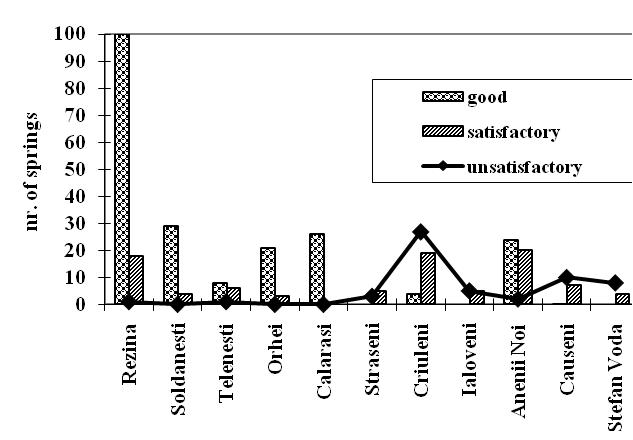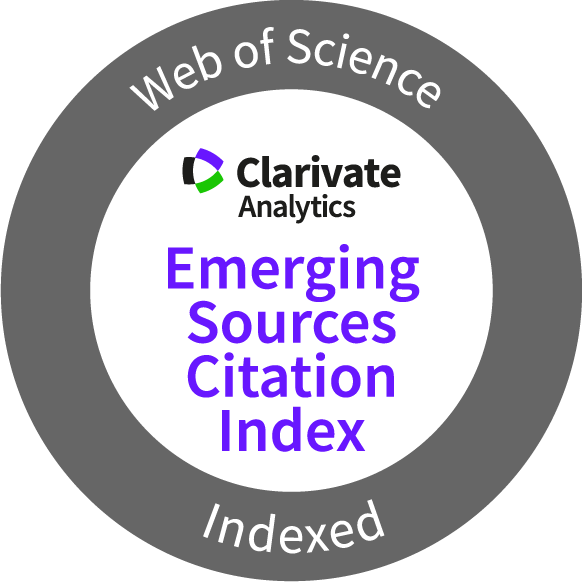Chemistry Journal of Moldova
Ecological chemistry
Author(s):
Field: Ecological chemistry
Type: Research paper
Issue: 2014 Volume 9, no.1
Pages: 53-58
Laura Bulgariu, Igor Cretescu, Dumitru Bulgariu, Matei Macoveanu
Field: Ecological chemistry
Type: Research paper
Issue: 2014 Volume 9, no.1
Pages: 53-58
Full Text (PDF): Download
DOI: dx.doi.org/10.19261/cjm.2014.09(1).06
Graphical Abstract: In this paper, are presented the adsorptive characteristics of a low-cost material that are abundant in our region, namely: Romanian peat moss from Poiana Stampei (Romania), for the removal of different toxic heavy metal ions (Pb(II), Hg(II), Co(II) and Ni(II)) and oil products from aqueous media. The experiments have concerned the influence of several experimental parameters (initial solution pH, adsorbent dose, initial heavy metals concentration, contact time, and temperature) on the heavy metals and oil products removal efficiency. The most important conditions for desorption of heavy metal ions from loaded-materials, required for their regeneration are also presented.
Downloads: 54
Author(s):
Field: Ecological chemistry
Type: Research paper
Issue: 2014 Volume 9, no.1
Pages: 59-73
Mohammad Osama, Felicia Armstrong, Peter Norris, Habiba Tahira Hussain
Field: Ecological chemistry
Type: Research paper
Issue: 2014 Volume 9, no.1
Pages: 59-73
Full Text (PDF): Download
Pleurotus ostreatus, a white rot fungus, is capable of bioremediating a wide range of organic contaminants including Polycyclic Aromatic Hydrocarbons (PAHs). Ergosterol is produced by living fungal biomass and used as a measure of fungal biomass. The first part of this work deals with the extraction and quantification of PAHs from contaminated sediments by Lipid Extraction Method. The second part consists of the development of a novel extraction method (Ergosterol Extraction Method), quantification and bioremediation.
Downloads: 49
Downloads: 49
Author(s):
Field: Ecological chemistry
Type: Research paper
Issue: 2013 Volume 8, no.2
Pages: 42-50
Maria Sandu, Anatol Tarita, Raisa Lozan, Viorica Gladchi, Gheorghe Duca, Sergiu Turcan, Elena Mosanu, Afanasie Prepelita
Field: Ecological chemistry
Type: Research paper
Issue: 2013 Volume 8, no.2
Pages: 42-50
Full Text (PDF): Download
Abstract (PDF)
DOI: dx.doi.org/10.19261/cjm.2013.08(2).04
Graphical Abstract:
In Memory of Valeriu Ropot for his scientific contributions in Waters Protection
The present study estimates chemical composition and status of the groundwater from the Dniester river basin. Research includes defining of springs/fountains location, evaluating physicochemical features of water, highlighting of main pollutants and pollution sources, establishing of water type and quality. The research was achieved within the State Program "Scientific research and water quality management".

Downloads: 55
DOI: dx.doi.org/10.19261/cjm.2013.08(2).04
Graphical Abstract:
In Memory of Valeriu Ropot for his scientific contributions in Waters Protection
The present study estimates chemical composition and status of the groundwater from the Dniester river basin. Research includes defining of springs/fountains location, evaluating physicochemical features of water, highlighting of main pollutants and pollution sources, establishing of water type and quality. The research was achieved within the State Program "Scientific research and water quality management".
Downloads: 55
Author(s):
Field: Ecological chemistry
Type: Research paper
Issue: 2013 Volume 8, no.2
Pages: 51-56
Larisa Postolachi
Field: Ecological chemistry
Type: Research paper
Issue: 2013 Volume 8, no.2
Pages: 51-56
Full Text (PDF): Download
DOI: dx.doi.org/10.19261/cjm.2013.08(2).05
Graphical Abstract: The results suggest that during the re-suspension, bottom sediments can become a relevant source of heavy metals and phosphorus forms which are mobilized in the water horizon overlying the bottom sediments.
Downloads: 28
Author(s):
Field: Ecological chemistry
Type: Research paper
Issue: 2013 Volume 8, no.2
Pages: 57-66
Larisa Postolachi, Vasile Rusu, Tudor Lupascu
Field: Ecological chemistry
Type: Research paper
Issue: 2013 Volume 8, no.2
Pages: 57-66
Full Text (PDF): Download
DOI: dx.doi.org/10.19261/cjm.2013.08(2).06
Graphical Abstract: The supplemented scheme for determination of phosphorus forms in natural waters was tested for the River Prut.
Downloads: 24
Author(s):
Field: Ecological chemistry
Type: Research paper
Issue: 2013 Volume 8, no.2
Pages: 67-72
Povar Igor, Spinu Oxana
Field: Ecological chemistry
Type: Research paper
Issue: 2013 Volume 8, no.2
Pages: 67-72
Full Text (PDF): Download
DOI: dx.doi.org/10.19261/cjm.2013.08(2).07
Graphical Abstract: The key quantitative characteristics of the theory of buffer action for polycomponent mono- and two-phase systems have been derived. It is shown, that the buffer properties in relation to the solid phase components are amplified with an increase of solubility due to protolytic or complex formation equilibria in saturated solutions.
Downloads: 27
Author(s):
Field: Ecological chemistry
Type: Research paper
Issue: 2013 Volume 8, no.1
Pages: 14-22
T. Leah, I. Povar, T. Lupascu, S. Andries, V. Filipciuc
Field: Ecological chemistry
Type: Research paper
Issue: 2013 Volume 8, no.1
Pages: 14-22
Full Text (PDF): Download
DOI: dx.doi.org/10.19261/cjm.2013.08(1).02
Graphical Abstract: This paper represents an analysis of the research concerning the use of fertilizers and nutrients balance in the soils of the Republic of Moldova. The nature and effectiveness of fertilizers, their influence on the agrochemical properties of soils, the protection of the environment from the pollution by nutrients in addition to the regulatory normatives of our country developed in order to determine the necessary in fertilizers for obtaining the expected crops have been as well discussed.
Downloads: 36
Author(s):
Field: Ecological chemistry
Type: Research paper
Issue: 2013 Volume 8, no.1
Pages: 23-32
V. Gladchi, Gh. Duca, N. Goreaceva, E. Bunduchi, A. Lis
Field: Ecological chemistry
Type: Research paper
Issue: 2013 Volume 8, no.1
Pages: 23-32
Full Text (PDF): Download
DOI: dx.doi.org/10.19261/cjm.2013.08(1).03
Graphical Abstract:This article presents the results obtained in the framework of the project 09.832.08.06A. The role of the tributaries on formation of the Dniester river water and the study of the waters quality of sources / fountains in the catchment area of the Dniester river as sources of water supply and for irrigation in the State Program, Scientific Researches and of the management of waters quality.
Downloads: 39
Author(s):
Field: Ecological chemistry
Type: Research paper
Issue: 2013 Volume 8, no.1
Pages: 33-36
T. Leah
Field: Ecological chemistry
Type: Research paper
Issue: 2013 Volume 8, no.1
Pages: 33-36
Full Text (PDF): Download
DOI: dx.doi.org/10.19261/cjm.2013.08(1).04
Graphical Abstract: The content of chemical forms of copper, the features of the distribution and transformation in eroded Gray soils and Calcareous chernozems are presented. Erosion process led to increase the chemical forms associated with clay minerals, carbonates, oxides, and reducing the mobile and humus organic forms. The losses of copper in different chemical forms consist 35% from humus horizon of eroded soils.
Downloads: 17
Author(s):
Field: Ecological chemistry
Type: Research paper
Issue: 2013 Volume 8, no.1
Pages: 37-42
T. Lupascu, M. Ciobanu, V. Botan, T. Gromovoy, S. Cibotaru, O. Petuhov, T. Mitina
Field: Ecological chemistry
Type: Research paper
Issue: 2013 Volume 8, no.1
Pages: 37-42
Full Text (PDF): Download
DOI: dx.doi.org/10.19261/cjm.2013.08(1).05
Graphical Abstract: The process of the hydrogen sulfide removal from the underground water of the Hancesti town has been investigated. By oxygen bubbling through the water containing hydrogen sulfide, from the Hancesti well tube, sulfur is deposited in the porous structure of studied catalysts, which decreases their catalytic activity. Concomitantly, the process of adsorption / oxidation of hydrogen sulfide to sulfate take place. The kinetic research of the hydrogen sulfide removal from the Hancesti underground water, after its treatment by hydrogen peroxide, proves greater efficiency than in the case of modified carbonic adsorbents. As a result of used treatment, hydrogen sulfide is completely oxidized to sulfates.
Downloads: 40






